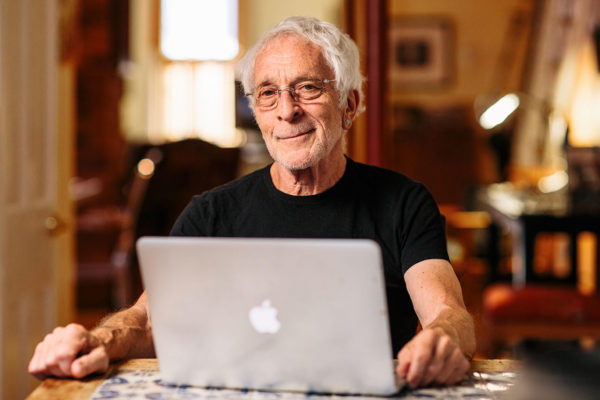December 18, 2017
Making your Story Matter

Photo by Cory Morton
It seems like criticizing our nation’s capital is the “in” thing to do these days; we’re supposed to “drain the swamp.” But I’ve been working in DC for two years now—that is to say, about twice as long as a lot of the people currently leading the federal government—and I have come to appreciate the edge and vibe of the place. No matter their political affiliation, whether they work for the government or for universities, private foundations, or the multitude of think tanks in the area, people are turned on, tuned-in, aware and motivated by their missions. And the diversity of professions is quite remarkable—philosophers, engineers, environmentalist, scientists, public advocates are all poured into the same pot, so to speak, and they all have compelling and enlightening stories to write. And I am motivated—psyched—to help them write these important stories, not just for one another (which is easy) but to share with the world!
I’m teaching a class in DC this winter called “Writing True Stories That Matter: Turning Research Into Narrative Through Creative Nonfiction,” and I am really excited about it, for lots of reasons.
Although I have conducted many workshops in DC over the past few years, I have had the chance to work with my students only for part of a day or, at most, a weekend. This is fine as a beginning; in a couple of days, you can discuss the basics of craft—writing in scenes, using literary techniques like dialogue and description, and imbedding information into the action. But becoming comfortable with craft is a long process. Craft takes practice, experimentation, trial and error, moving from paragraph to paragraph and draft to draft. While we write, we are finding our voices, developing our understanding of the subject at hand, establishing place, and putting it all together in structure that is informative and compelling.
And that’s really only part of the process. There’s also interviewing, which for creative nonfiction is not only a search for information and answers to tough questions, but a journey into finding and developing a story that both frames and reflects the focus and essence of the article or essay. And often the framing story — the real pay dirt – can come only from an immersion with subjects or from a deep reckoning with our own lives and experiences. Putting together a true story is always a delicate balance, a process of learning to push the boundaries without overstepping them.
I have been researching and writing creative nonfiction most of my professional life, and it is invariably exciting, surprising, challenging, and rewarding. Almost as good is sharing the process with my students, which is what I will be doing in January. This will be my first graduate-level course in town, an opportunity to work with writers for a prolonged period so that all of the various elements in the genre can be practiced and polished.
The course goes on for 16 weeks, for three hours every other Thursday and Friday evening. So there will be lots of intensity two days in a row and then almost two weeks in between to write. Participants should expect to end the term with a polished 5,000-word essay, a book chapter, or maybe even a draft of a book proposal. By the end of the course, they will understand the nuts and bolts of the genre and, I hope, feel confident about moving ahead on their own.
Putting together a true story is always a delicate balance, a process of learning to push the boundaries without overstepping them.
It’s also in many ways what I intend to accomplish with this blog. I want to define creative nonfiction so that my readers will understand it, including ethics, craft, its structure and mission—and process of researching, be it immersion, interviewing or personal history – memoir. In time, I will write about the great writers of creative nonfiction – Orwell, Hemingway, James Baldwin, Lillian Ross, Norman Mailer, Annie Dillard, Talese and McPhee. And some of the bright stars of today, like my former student Rebecca Skloot, who will be a guest in one of my classes. I also intend to talk about what’s next in creative nonfiction—where the genre is going why it has become not just a “thing to write” but a movement. A way of writing with a mission and momentum.
I am not going to be the only blogger, though. You are welcome to contribute. And I am certainly going to invite my students in this upcoming course, “Writing True Stories That Matter” to be a part of it. The course will be offered in DC for the first time in the ASU Center – at its new location on 18th and I streets. Great digs. Cutting edge technology. And this course is only the beginning. We are building a program in DC. “Writing True Stories That Matter” is the launching event—the beginning of something special and unique. There are still a few openings in the course. Check it out.
Lee Gutkind is the author and editor of more than 30 books and founder and editor of Creative Nonfiction, the first and largest literary magazine to publish narrative nonfiction exclusively. He is Distinguished Writer-in-Residence in the Consortium for Science, Policy & Outcomes at Arizona State University and a professor in the School for the Future of Innovation in Society.